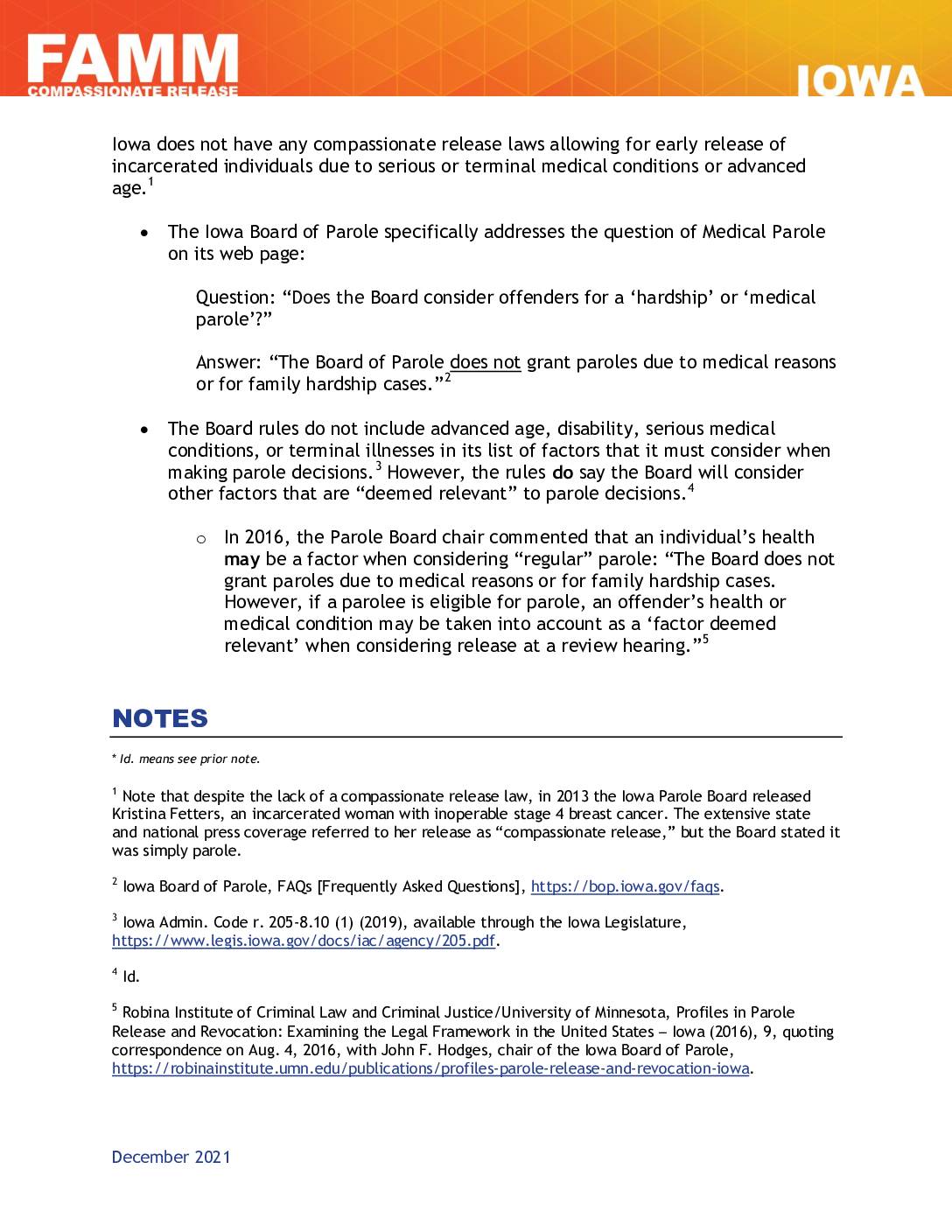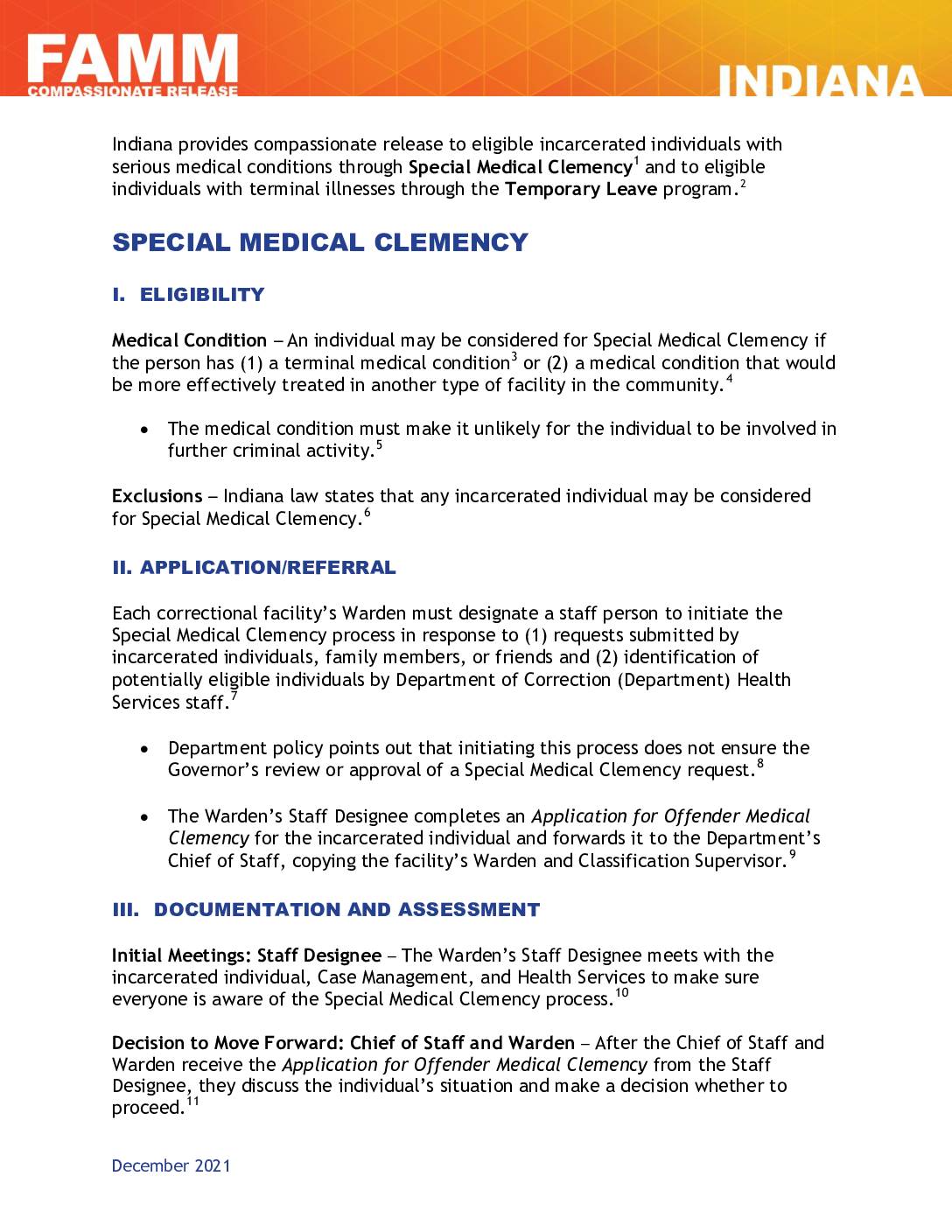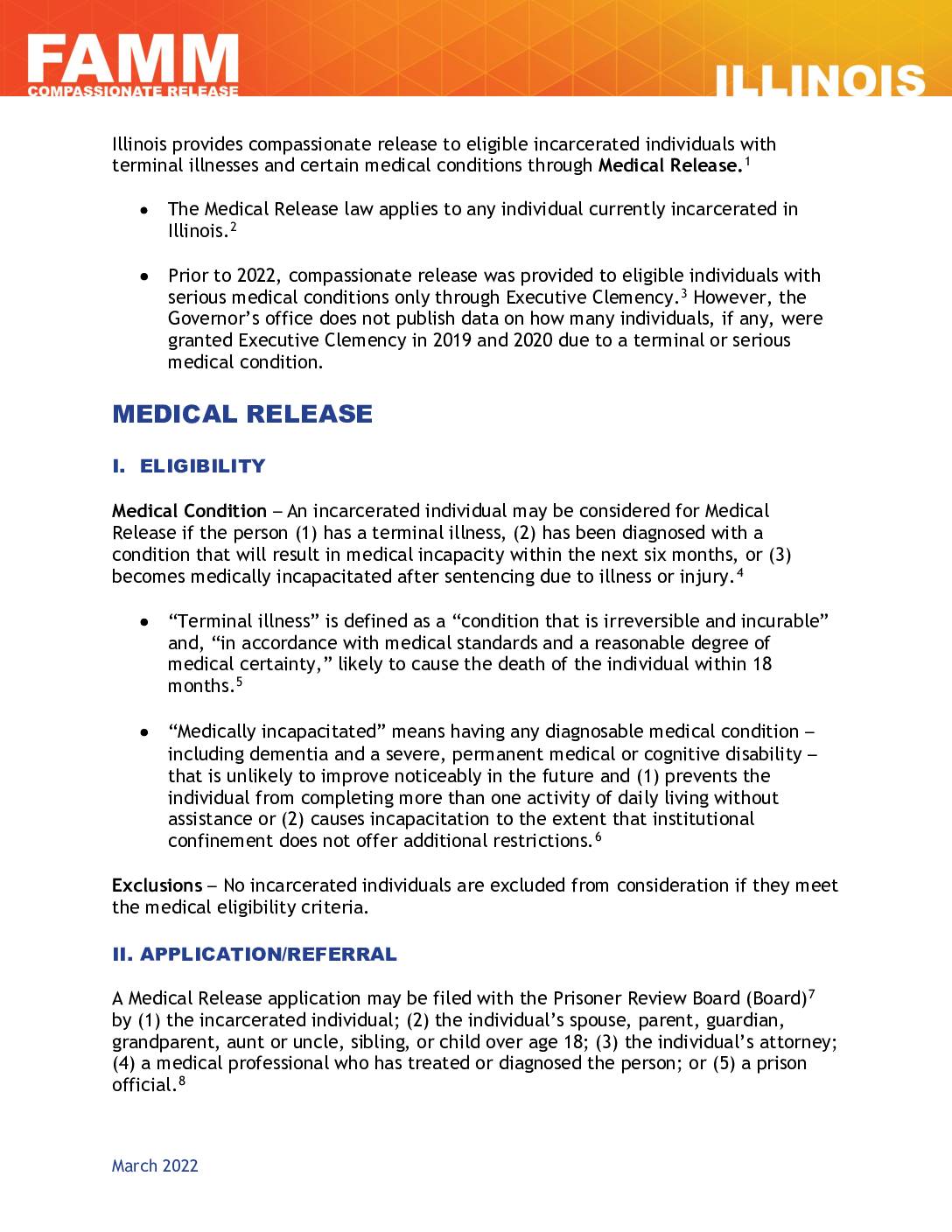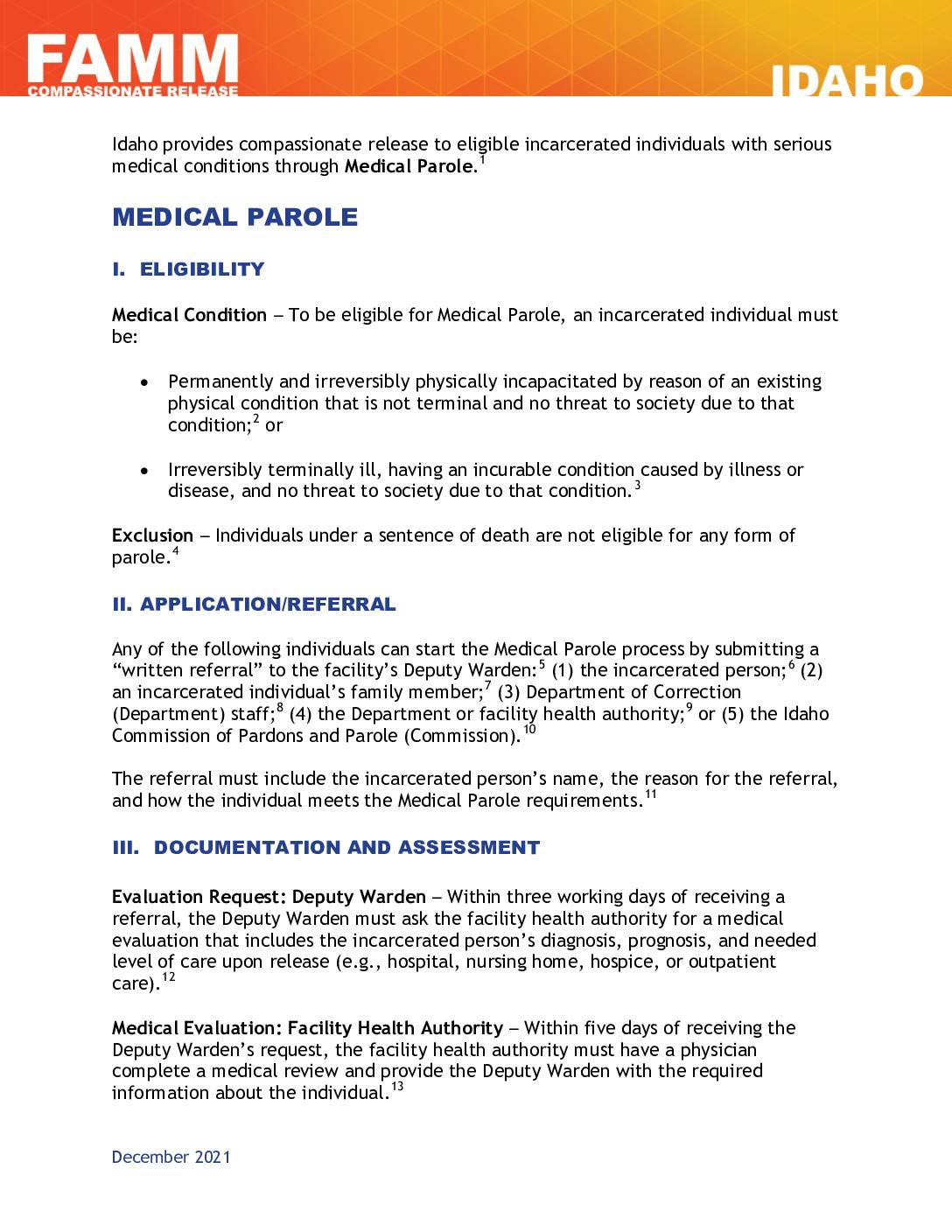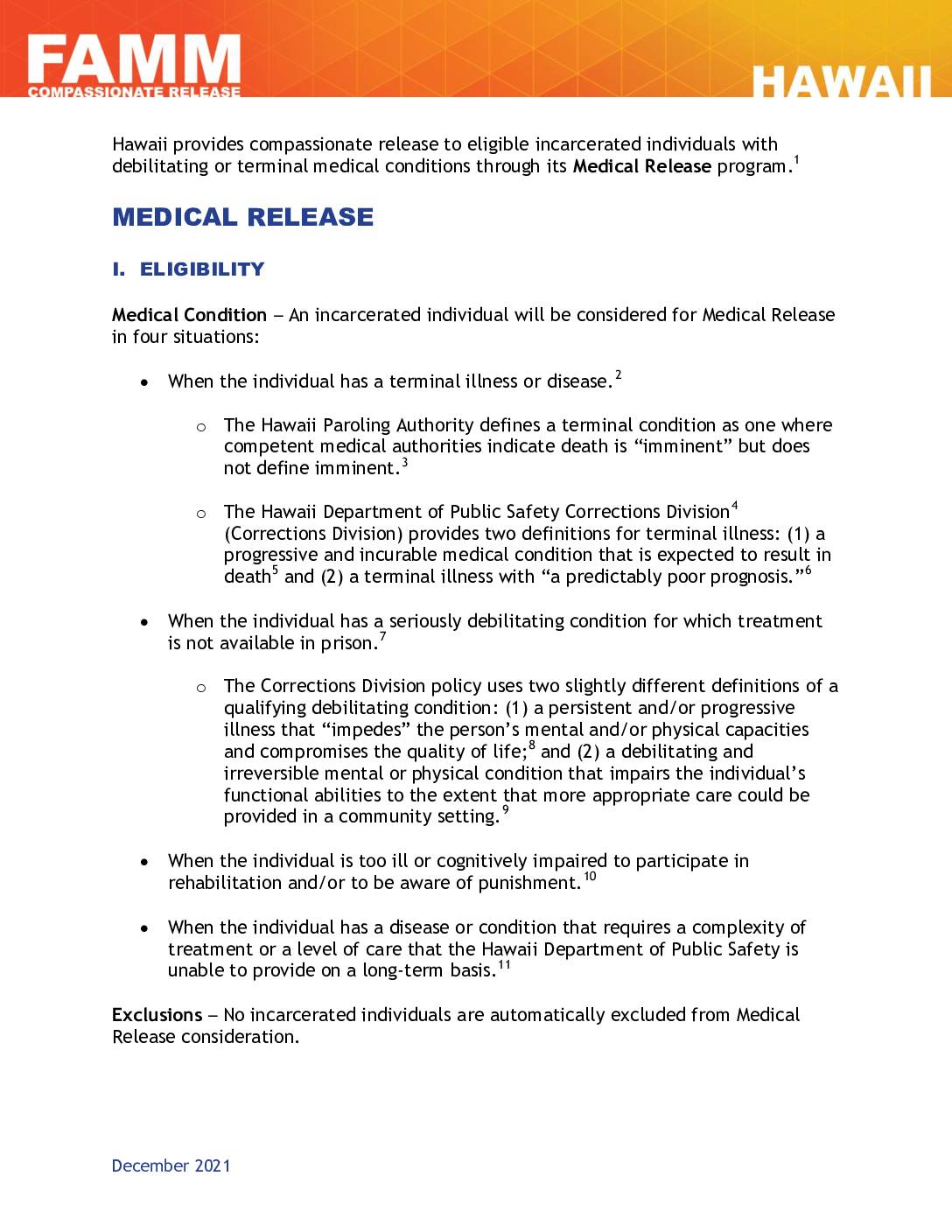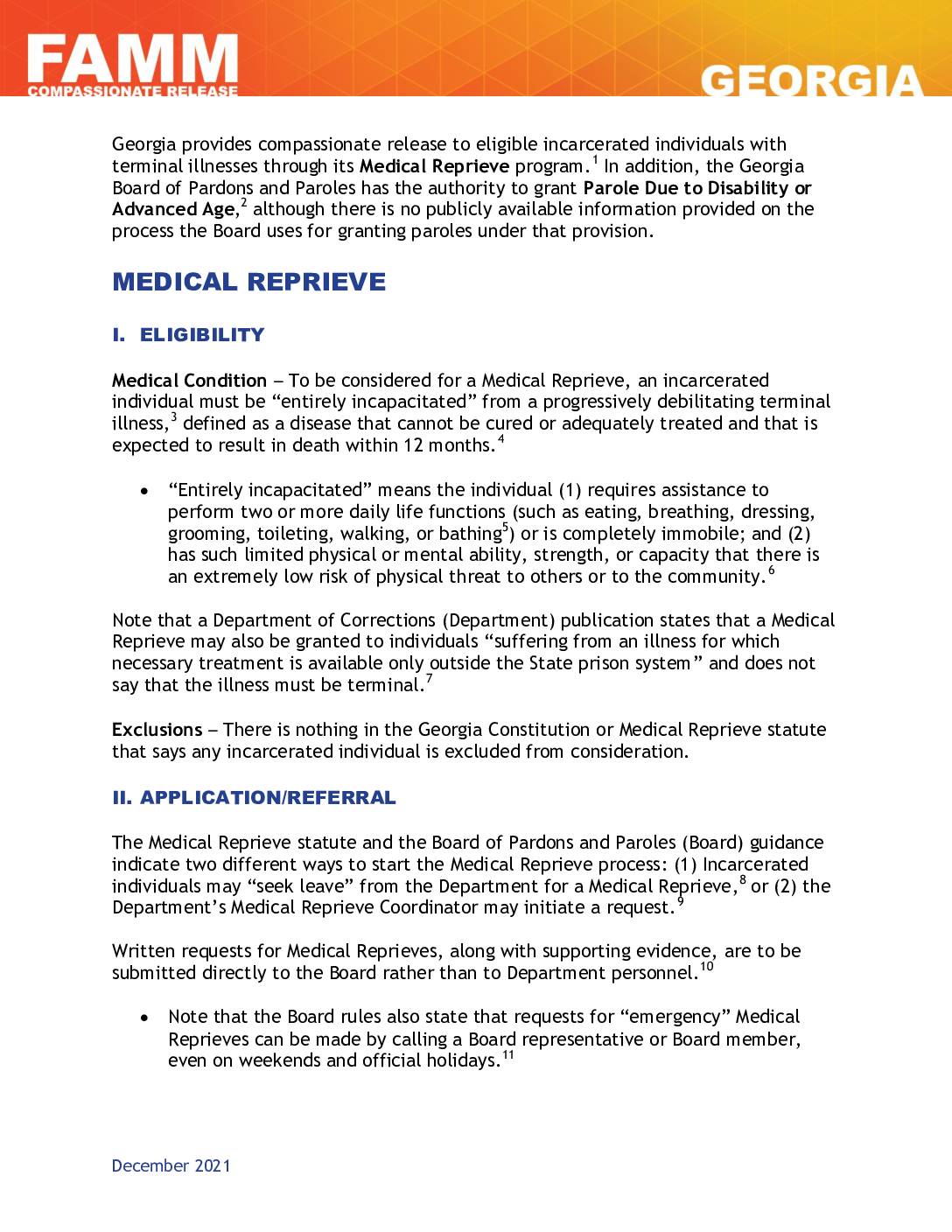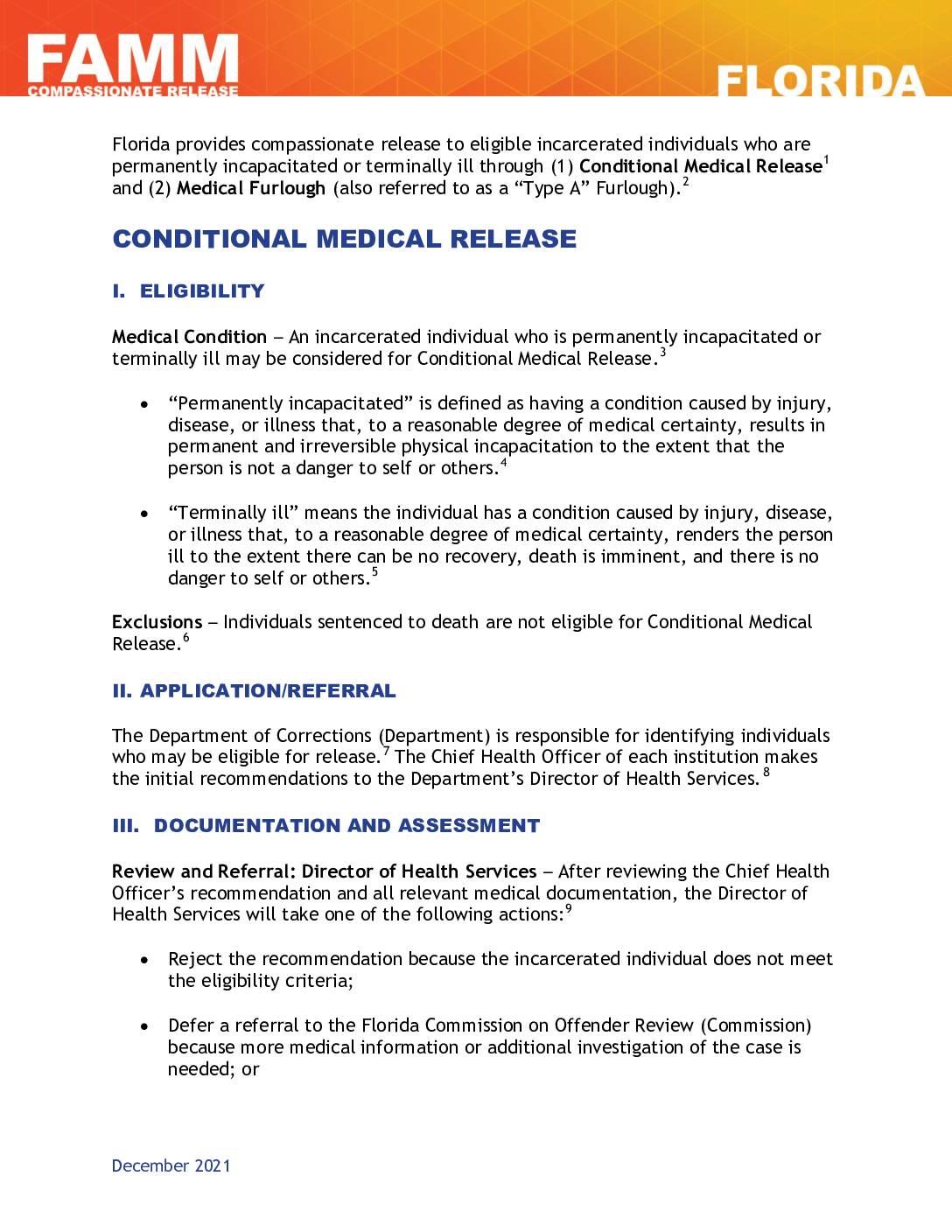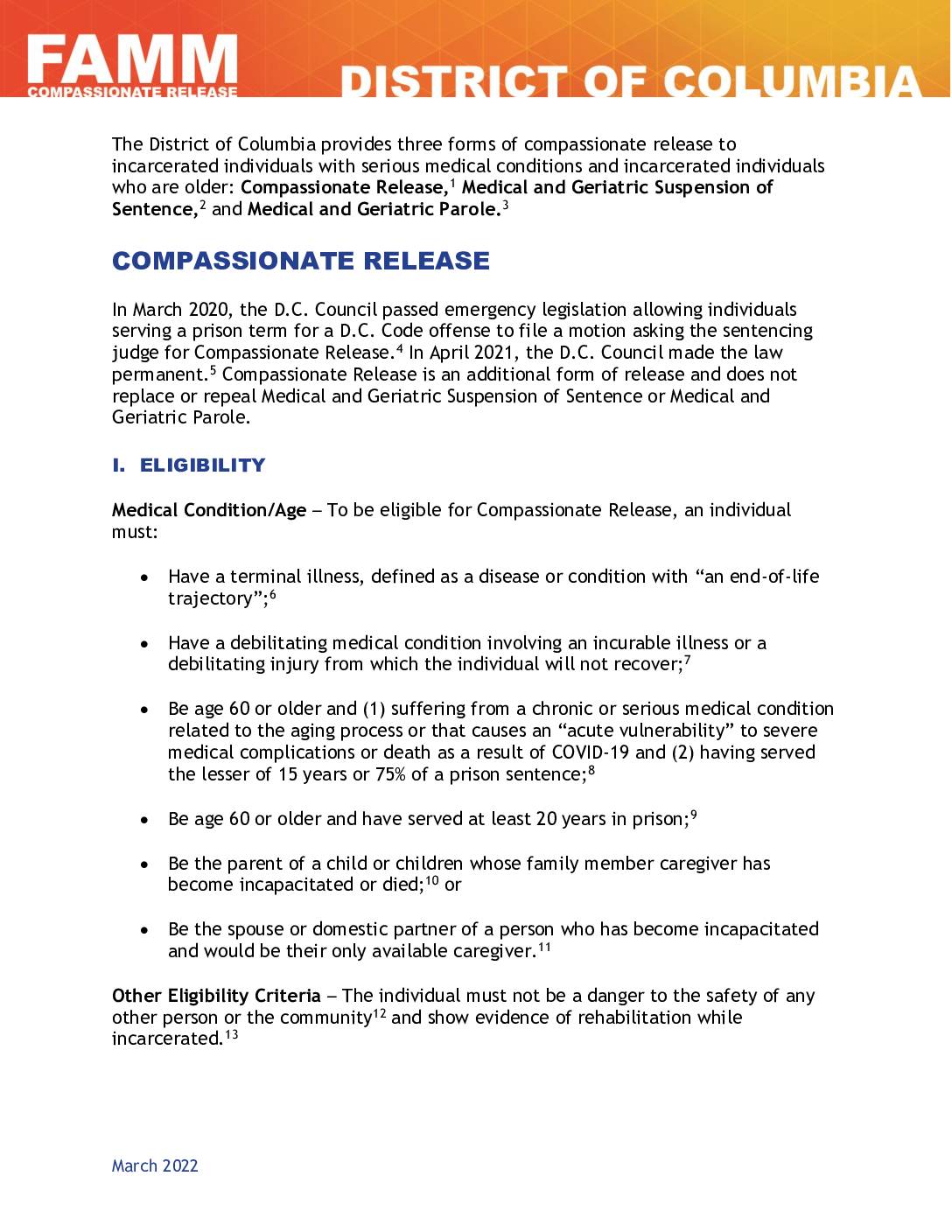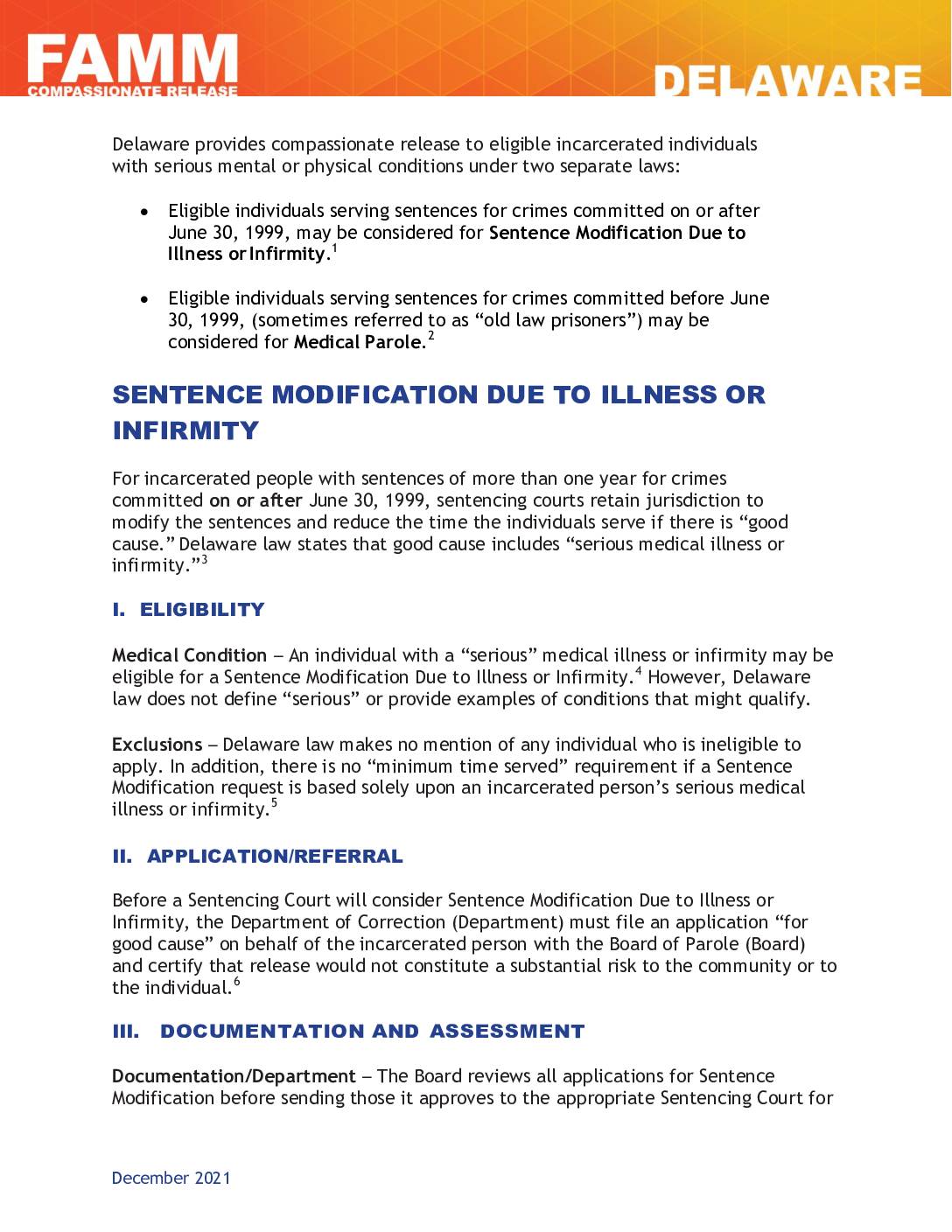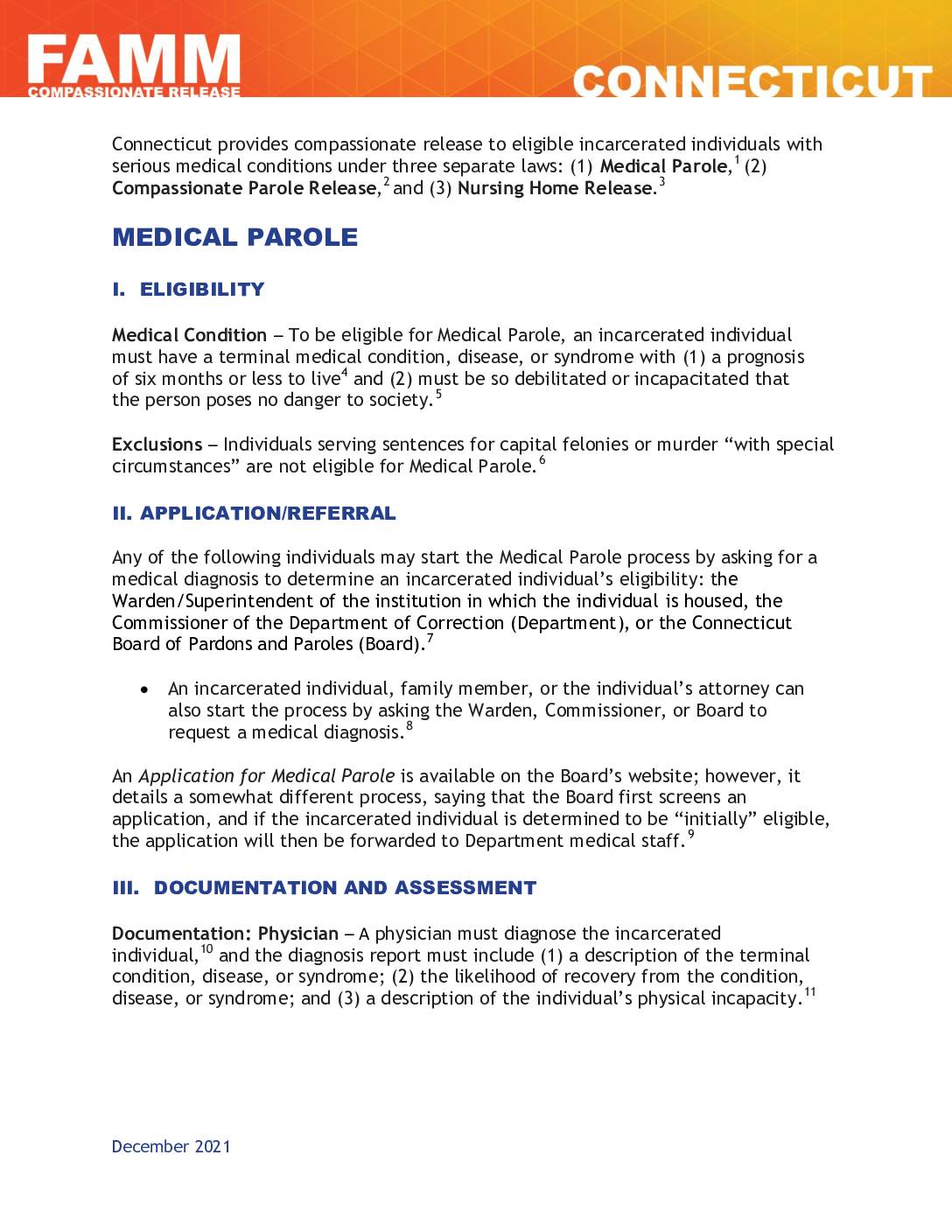PDF Everywhere and Nowhere: Compassionate Release in the States – Iowa
Iowa does not have any compassionate release laws allowing for early release of incarcerated individuals due to serious or terminal medical conditions or advanced age. However, an individual’s health may be a factor when considering “regular” parole. This memo provides additional information about this.


